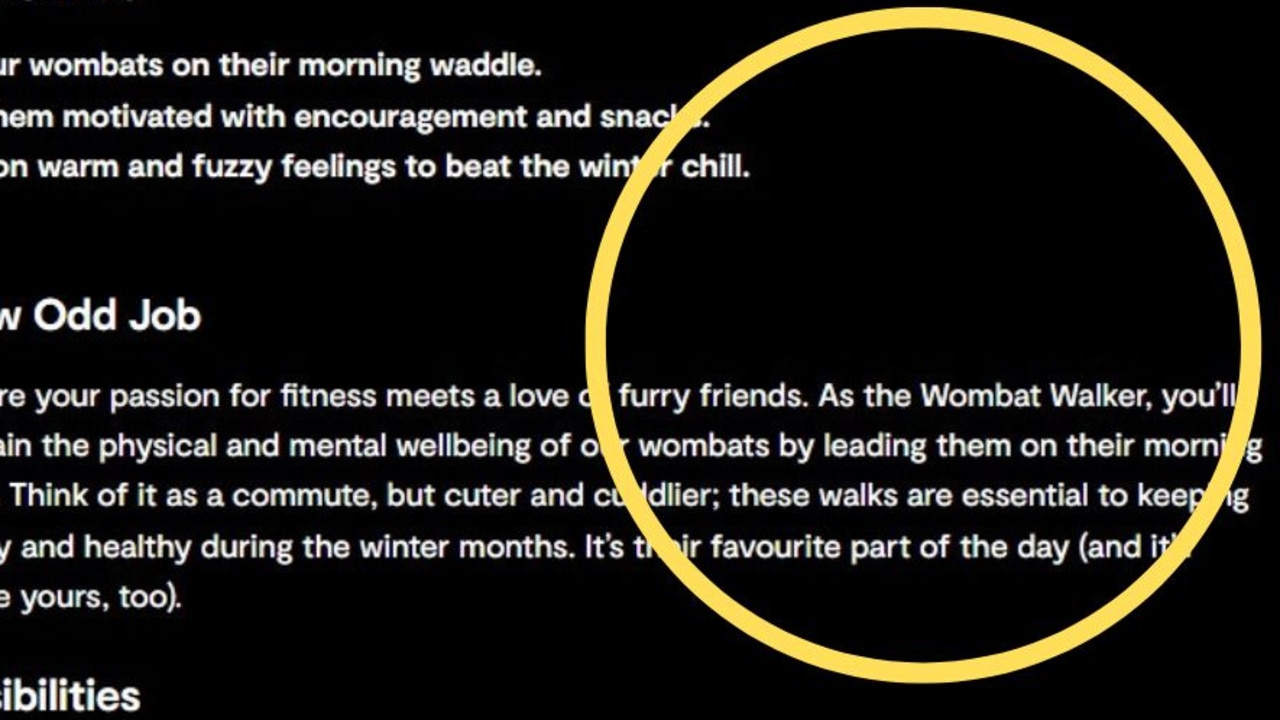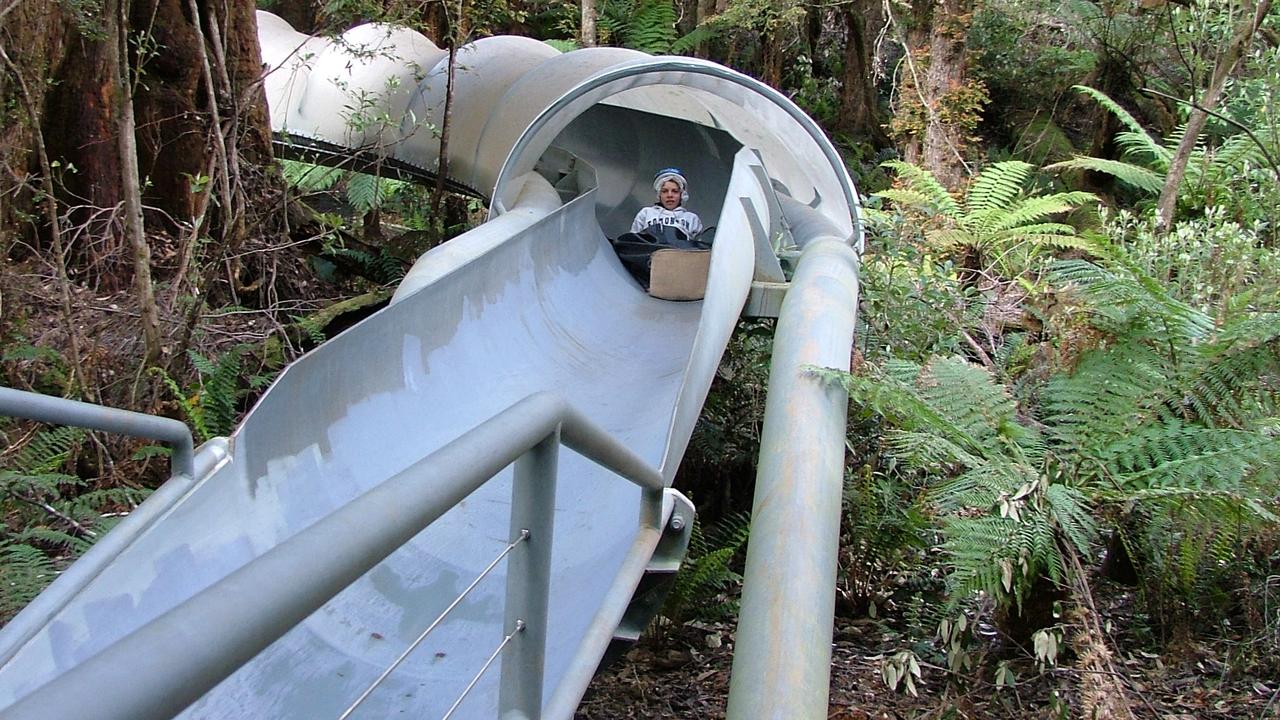Hitting Tassie's cultural trail
WITH its abundance of fine food, arts and crafts and niche hotels, Tasmania is a haven for cultural buffs. Actually, it's a must-see for everyone.

"DON'T feed the harpist," shouted the conductor of the Tasmanian Symphony Orchestra (TSO), as an audience member fled back to her seat with a tasty morsel from the pan of chef Stefano de Pieri.
Stefano, along with chocolatier Igor van Gerwen, had been cooking at the forefront of Hobart's Federation Concert Hall stage as the TSO breezed through a program of light classical music through to the finale, The William Tell Overture.
It apparently was all good cooking music as the chef and the orchestra inspired each other under the control of conductor/ringmaster/stand-up comedian Guy Noble, who worked in a chef's hat and, at one stage, with a chocolate baton.
Asked afterwards at the pub what his favourite cooking music was, chef Stefano didn't have anything specific. It was a mood thing he said, "But you can't cook to Liszt".
But you can list as you cook. I've done it many times.
Such a spectacle is unique to Tasmania, though not surprising, once you have been on a "cultural" tour of restaurants, delis, all manner of specialty food and beverage producers, art and craft galleries, studios and niche B&Bs, hotels and guesthouses.
It's Australia's busiest per capita cultural state, and all the players have a "one-off" quality and thrive in an atmosphere of mutual help, advice and recommendation that makes you wonder if this is a socialism experiment that actually works.
Many of Tasmania's food, drink and art craftspeople are Europeans who have found "home" on this little green island of goodwill and a welcoming market for their specialties.
There is so much of it, at such high quality, that the market overflows from locals, tourists and each other and expands to the mainland or is exported across the world, be it cheese, wine and beer, the whimsical prints of Tom Samek, unique Aboriginal art, single malt whisky from Hellyers Road Distillery, hand-made paper from Creative Paper at Burnie, or Pacific oysters from Barilla Bay.
Any good tour of Tasmania should start in Stanley, a fishing and tourist resort in the northwest, that nestles under the extinct volcano called The Nut. You can "climb" it via a set of steep and zig-zagging steps with a guide rope to help you along, or take the easy option of a chairlift.
The views from the mesa top are staggering.
Stanley does, of course, have a distinctive gallery, which includes wood craft, metal craft, glass pieces, paintings, prints, hand-made jewellery, weavings and a nice drop of wine while you browse. The gallery's market is mostly outside the town and principally overseas.
The building was once the town's general store in the style of days gone by, where you could buy anything from knitting needles to a plough, or just your groceries and an ice-cream.
Though I admired the gallery, I rued the loss of that general store, the likes of which I had not seen since a child in the fifties. But then I did get to see some Tom Samek prints, some in his "parrot period" of last year, a diversion from his face and wineglass period and various others, all created and captioned with a Czech-Australian's whimsical view of Australian culture and language.
Stanley draws over 100,000 visitors a year, has a good caravan park with cabins, a few motels and many B&Bs, none finer than VDL, a former bluestone warehouse for Van Diemen's Land Co that has been architecturally transformed into four contemporary suites.
It's down on the waterfront in the shadow of The Nut and a short walk to the licensed steak and seafood restaurant Stanley's on the Bay, built with stones from the ballast from early sailing ships.
For something completely different, try the Beachside Retreat, on the west inlet at Stanley that has a five-star spa lodge for a family holiday or ecocabins right on the beach for couples only. These cabins are quirky, unique and self-contained, almost like you built it yourself on a desert island but with all mod cons.
Driving back east, a little south of Devonport, the town of Sheffield is virtually art in your face, with most commercial buildings, some of them heritage-listed, having full outside-wall murals by various artists. Most feature life as it was, but there is a multi-wall panorama of Cradle Mountain.
It's the perfect place for morning tea as you are compelled to stop and walk around anyway.
Back on the road to Deloraine, at nearby Chudleigh, spend a tasty hour or so at the Honey Farm, where you can see a fully working glass beehive and taste about 50 varieties of honey, some flavoured with spices, others flavoured naturally via the bees, such as leatherwood blossoms. Be sure to leave a spare hand for the honey ice-cream as you go off to another niche market specialist outside Deloraine – Ziggy's Atlantic salmon farm, in 5ha of natural wetlands.
A walk-around tour is an informative surprise and the salmon are close enough to splash you.
With some luck you may see a platypus and the geese won't leave you alone.
Back at the workshop/shop, you can get salmon in whatever state you'd like them, including Ziggy's specialty of hot smoked.
This thriving little business sends 5kg boxes of salmon all over Australia but his own shop makes up half of his market, drawn from locals and tourists.
Not content with such a demanding business, Ziggy also grows ginseng, in collaboration with a Korean partner. The primary crop is Korean variety but he also grows American, Chinese and Siberian "just out of curiosity".
The writer was a guest of Tourism Tasmania.



